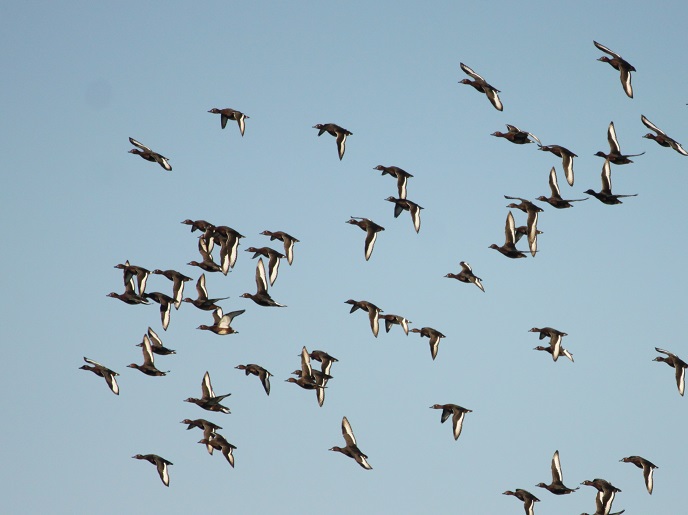Characterising the factors that drive avian influenza dynamics
Avian influenza viruses generally only replicate in the upper respiratory and digestive tract of birds, particularly wild waterfowl. However, a drastic increase in virulence can occur after transmission to poultry including chickens. Introduction of new animal influenza virus strains into the human population can result in a pandemic, as seen in 2009 for influenza A H1N1, known as swine flu. Avian influenza dynamics are poorly understood, which impedes the development of effective prevention and control strategies for highly pathogenic avian influenza (HPAI) viruses. The EU-funded DELTA-FLU project is addressing this critical gap via high-tech tools and a combination of observations, animal studies and model systems.
Avian influenza virus transmission
Influenza viruses are divided into subtypes based on their haemagglutinin (H) and neuraminidase (N) surface proteins. DELTA-FLU focused on special HPAI viruses, the H5 lineage from Asia, which has been spreading for more than 20 years and is maintained in the wild bird reservoir as the first HPAI virus after mutating from a low pathogenic avian influenza (LPAI) virus. "In Europe, HPAI viruses H5N8 and H5N1 are the major subtypes that have resulted in serious epizootics (akin to epidemics in humans). They are also responsible for a current panzootic (akin to pandemic) affecting Europe, Asia and North America,” explains Thomas C. Mettenleiter, President of the Friedrich Loeffler Institut –Federal Research Institute for Animal Health and DELTA-FLU coordinator. Transmission from wild birds to humans requires certain adaptations, and pigs are key enablers. Pigs present avian-like, as well as human-like, receptors in the respiratory tract, allowing both types of viruses to replicate and adapt. Moreover, “pigs can act as a mixing vessel, allowing avian influenza viruses and human-adapted viruses to replicate concomitantly. This can result in novel reassortants, hybrid viruses with genetic material from both viruses, making studies of LPAI/HPAI virus replication in pigs very important,” states Mettenleiter.
Profiling HPAI H5Nx viruses
The ambitious five-year DELTA-FLU project is focused on currently circulating highly pathogenic H5Nx viruses (particularly H5N8 and H5N1). Among the highlights, scientists now have a much better understanding of the flyways of wild migratory waterfowl from transmitter satellite tracking. They have characterised HPAI H5N8 and HPAI H5N1 viruses and found that, while these HPAI viruses have high virulence for certain wild birds, they have a low zoonotic potential (to jump to humans). DELTA-FLU unexpectedly detected that the incursion of HPAI H5N8 and HPAI H5N1 viruses into Europe was a swarm incursion (one with a high number of reassortant viruses). Using genomic epidemiology, the team was able to elucidate the HPAI H5N1 virus’ path from introduction into Europe and on to North America via Iceland. “More than 15 HPAI H5N1 virus genotypes were described, and the genetic make-up was characterised using next-generation sequencing methods and phylogenetics. Surprisingly, we found diseased mammals like foxes with the new HPAI H5N1 virus strains. DELTA-FLU also elucidated the emergence of HPAI viruses from LPAI viruses and studied it using transcriptomics,” explains Mettenleiter. DELTA-FLU has filled important gaps in our understanding of avian influenza dynamics, particularly regarding the highly reassorting H5Nx strains responsible for ongoing global outbreaks. The knowledge paves the way for the development of effective prevention and control strategies.
Keywords
DELTA-FLU, HPAI, avian influenza, H5N1, H5N8, H5Nx, reassortant, highly pathogenic avian influenza, swarm incursion







